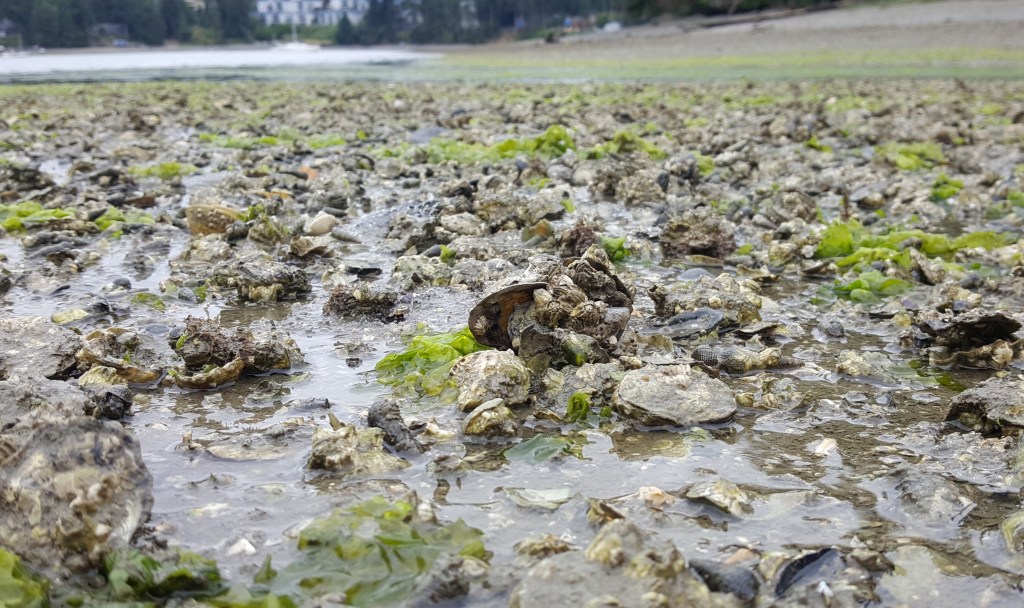Restoration of nearshore habitats
Kelp creates marine forests that support numerous organisms
Bull kelp (Nereocystis luetkeana) is a large species of macroalgae that forms dense clusters of stipes and large canopies of blades. The resulting kelp forest habitat facilitates many species from microbes to mammals. We are testing in-water restoration methods for bull kelp, working to identify key stressors leading to kelp decline, and beginning to characterize the diverse communities unique to Puget Sound kelp forests.


Building a network of underwater kelp ecological monitoring.
Kelp conservation & restoration around the world – Kelp Forest Alliance
Kelp restoration project challenges & opportunities – collaboration of the Green Gravel Action Group
Oyster reefs benefit coastal communities
Native Olympia oysters (Ostrea lurida) are an important ecosystem engineer throughout shorelines of the Northeast Pacific Ocean and especially within the quiet waters of Puget Sound. Olympia oyster populations suffered severe declines in the 19th and 20th centuries, but small populations exist throughout most of their historic range.
Puget Sound Restoration Fund has been increasing Olympia oyster habitat for more than two decades, including 100 acres 2010-2020. We are working to create a pathway of ecological assessment to determine restoration priorities and efficacy.

2023 largest native oyster project on the West Coast in Silverdale, WA.
2023 assessment shows native oysters populations are booming in Fidalgo Bay